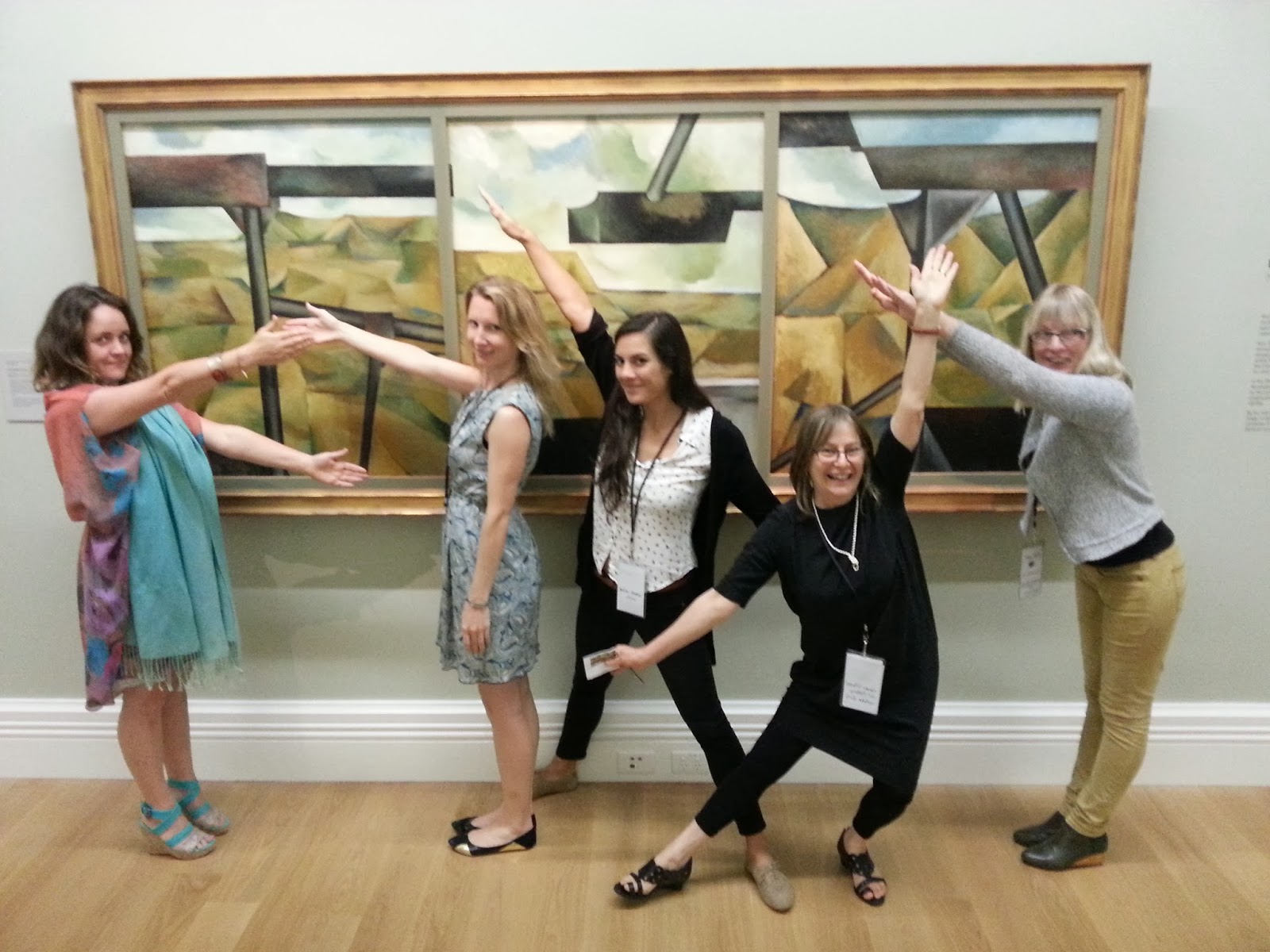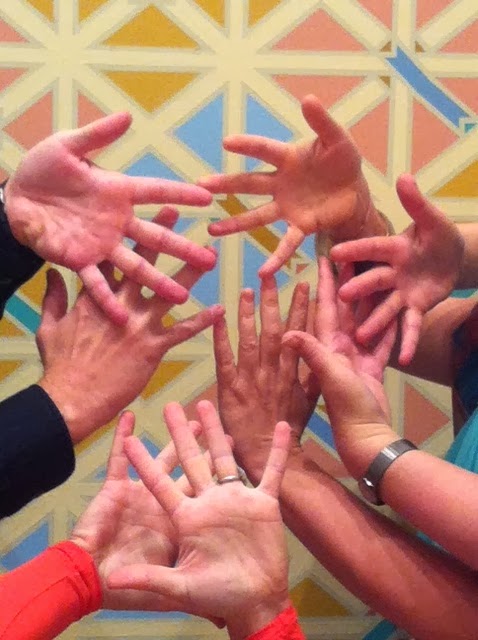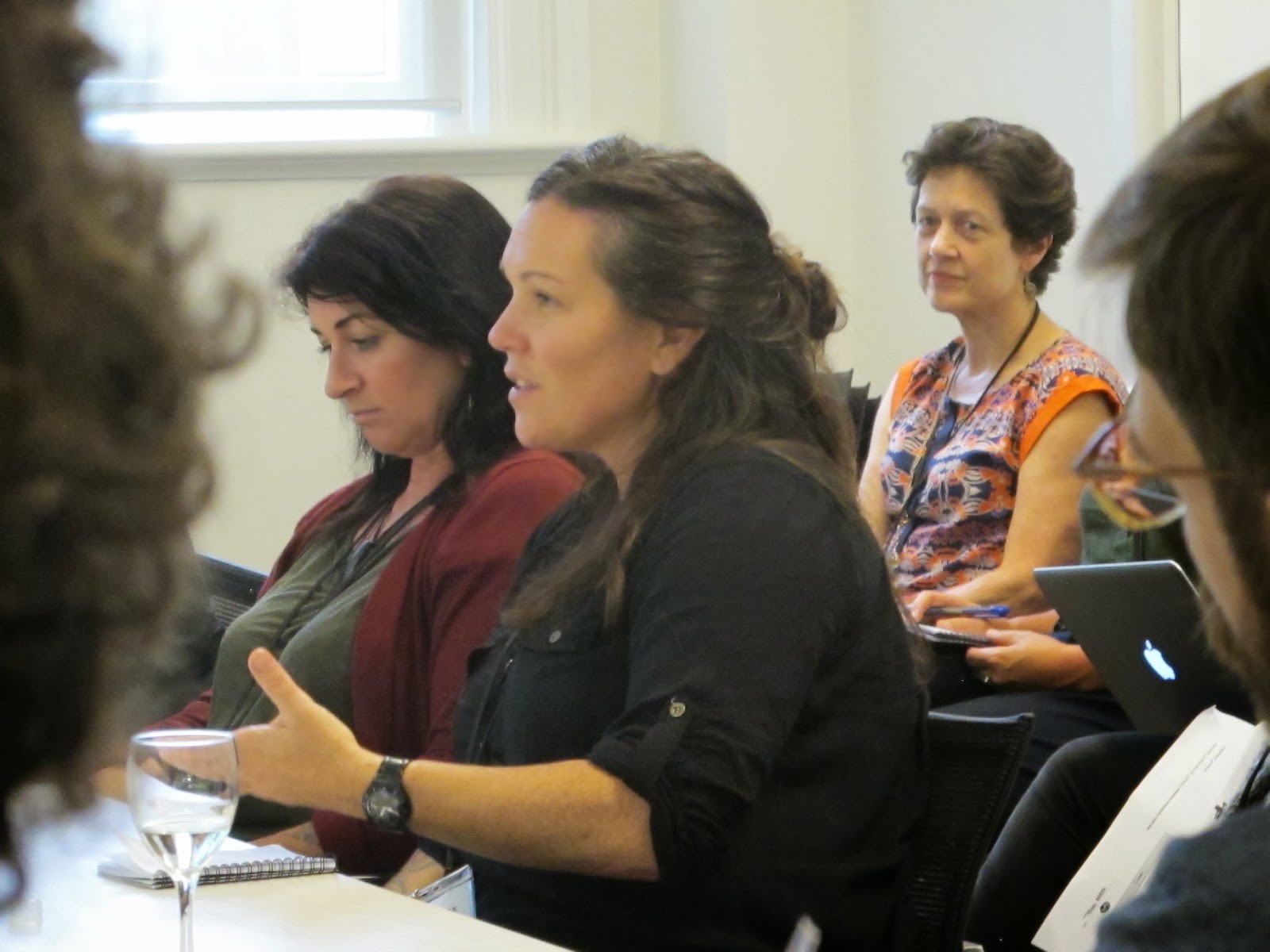Thursday 6 March 2014
Christa Napier-Robertson

A conference that explores cross-curricular programming for secondary students, linking in and through the Arts. An experience that is relevant to a person’s real needs and interests… by being driven by its audience. An experience that feels less like a blind date, and more something that really connects people... That’s what we were trying to create with ArtLinks.
I’ve never worked on developing a conference before - and that’s probably one thing that got me through it - not knowing what I was going to be dealing with! The other, very important thing that got me through it was being able to collaborate with my colleague Lee Devenish, Assistant Head of Art from Waitakere College and chairperson of Auckland Secondary Art Teachers’ Association. I cannot over-emphasise how key it was being able to co-develop this event, from concept to fruition.
So I thought I would just share a bit about the conference - what happened and why, and how people responded. Also I’d like to share a bit of our ‘where to next’.
Why did we do this?
- For all the reasons identified above, and…
- Because we passionately believe that learning in and around the Arts is a vital part of a rich, holistic education. Current trends in education don’t seem to support this in our school system. We want to ensure these valuable areas of learning are not only maintained, but continue to expand and develop, and enrich all other learning areas also.
- Because we are keen to expand the ways in which we work with teachers in our Schools Programmes. We wish to expand programming and resource options, but feel it makes most sense to do this in conjunction with teachers. So it’s important to spend time face to face with people, and to make the most of opportunities to hear the triumphs, and challenges being faced. We hope that continuing to do this, and to work in conjunction with teachers as we pilot and prototype, will help ensure that our young people get the best possible access to top notch Arts education, and this fabulous public institution and its resources.

Development
- It took six months to pull ArtLinks together. After completing it, someone casually mentioned it usually takes two years to do something like this, so no wonder it felt like it did!
What did we do to try to make it as relevant as possible to teachers?
- Limited the subject areas allowed to participate this year. We concentrated subject areas to the Arts, English and Media Studies, hoping that this would give us the critical mass required to ensure robust conversation.
- Ensured it was by-and-large teachers selecting the topics, and running the majority of sessions. We developed starter ideas for teachers to vote on, or add to for others to vote on. The ultimate idea being that the most popular session topics, would be those that ran. To be honest, that didn’t work entirely. See below for more details.
- Set parameters around how sessions could run - sessions had to be participatory and focused on people having ‘take home’ ideas – no dry lectures allowed!

What did we do to try to encourage real connections between people?
- We invited a diverse group of people, including inviting arts professionals - visual artists, filmmakers, writers, musician, actors, and those working within arts organisations. We were interested in the idea of building a strong sense of community between this group of (hopefully!) likeminded people.
- We did an icebreaker. This involved forcing everyone to work in a changing group of other participants, creating tableaus of artworks on display. And there were winners! Fastest to complete, and best photo (see some samples above). It was definitely a conference highlight - everyone was enjoying themselves!
- Imposing the participatory session model on everyone - it was all about talking (smiley face) We made sure there were lots of yummy things to eat, and time to enjoy them with others
How do we plan to ensure the learning ‘lives on’?
- Everyone who participated wrote themselves a postcard identifying what they’d learnt, and what they were wanting to take forward into their work in the following year. We posted these out to people in the first weeks of the New Year.
- We audio recorded most sessions. These will soon be added to the Gallery’s YouTube channel and website, along with any worksheets etc that our session developers included in their sessions. We’d love for everyone interested to be able to benefit from what was shared at ArtLinks

What were some of the results? How did people respond?
'I just want to say thank you, thank you for holding, co-creating, and co-facilitating one of the best conferences/gatherings I have ever attended.' – participant feedback
- The conference itself got a fantastic response from participants. We were thrilled that putting such a diverse group of people in the room together seemed to result in such rich, connecting conversations.
- This was especially great because getting to the point of getting people in the room, was a hard job! Our initial idea of getting potential participants to vote on topics of interest just wasn’t possible, as we just weren’t able to get enough response to make that work. In the end, we went with contacting people through a variety of means and asking them individually if they had something they were passionate about and wanted to talk to. Some of these topics aligned with our suggested topics. I personally spent weeks and weeks emailing and ringing people to drum up interest. Really worth it in the end though - I met many very, very interesting and passionate people that I remain in contact with.
- Working on an intimate scale - only 70 people total, worked very well. This gentle ‘hot-housing’ meant people really got to know each other
- The participatory model - which ended up mostly involving the facilitator sharing their work within a particular area, establishing key questions for the group, then opening the floor up for these to be discussed and others to make links with their own experiences, seemed to work well for our participants Lee and I bringing our diverse backgrounds together in this initiative worked really well. We each were able to bring to the table our unique knowledge, skills and networks to create this eclectic, but connected programme.
Where to next?
There is obviously an appetite for this - so Lee and I are keen to continue to offer the conference in the future. We both love the idea too that facilitators at future versions of this event might be sharing experiences that came out of conversations started during this particular event! So, we’ve reviewed the feedback, and are in the process of thinking about questions that have arisen, and what we can do with the event going forward.
A few questions of interest we are thinking through:
- What subject areas do we involve in this? We really value the relationships that have been formed with the teachers participating this year, and would love to be able to continue with these. However, there are also teachers of a range of other subjects it would be great to involve too. We’re a small venue, so larger numbers wouldn’t be a possibility here.
- Topics discussed during ArtLinks involved ways of thinking that could require changes to pedagogical approach and timetabling. How do we get school leaders involved in this conversation too, as people in a position to influence these things within their school settings?
- How might creatives across the Humanities contribute further to something like this in future? We had two fantastic keynotes, John Pule (visual artist and writer) and Vincent Ward (painter and filmmaker) who generously shared their practice with us. Likewise, we had a ‘creative careers’ session where other attending creatives could talk about their practice also. However, we didn’t have the opportunity to involve participants in much experiencing of art forms. I had another participant offer to perform her work during one of the sessions, and I had to tell her there wasn’t enough space! Since experiencing the Arts is so vital in valuing both the Arts and Arts education, how do we ensure this is present? Especially when participants may not be ‘experts’ in the Arts, so may be experiencing some of these art forms for the first time.
- Are there ways we can better support teachers in sustaining connections made, and in implementing ideas developed during the event?
- How might this conference support Maori and Pacifica students in achieving educational success? What relationships does the conference have with issues around secondary-tertiary transitions?
Whether you came along or not, feel free to comment on anything above, and offer your ideas in answering some of the questions Lee and I are currently considering.